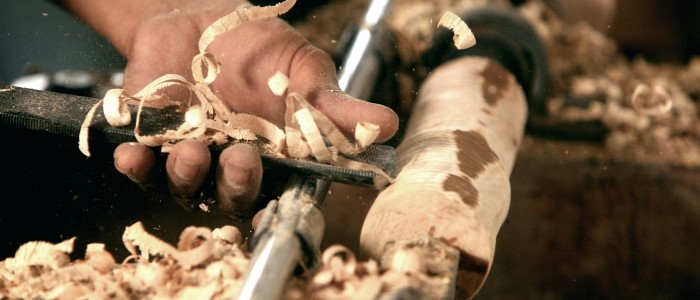Woodworking has been at the heart of the UK manufacturing sector for years. Even though as a trade it goes centuries back, with wood being a basic material for housing, furniture, tools and a variety of other products; today we often hear how it may be regarded as a dying art.
Here we will explore the advantages that woodworking has, including the creativity that today’s woodworkers are incorporating into their work, to keep the hobby very much alive.
Advantages of Woodwork
With modern technology constantly advancing and the demands of the industry changing, the field of woodwork has changed. The development of CNC has allowed manufacturers to mass-produce wooden products at greater ease, at a faster pace and with minimal waste. However, skilled fine woodworking still lives as a craft pursued by many. Today’s more imaginative creations, taking a much longer time to produce and most likely at a greater cost, may have more of a desired and contemporary twist, and are therefore more appealing to those who aspire to have a more fashionable furniture collection, rather than old-fashioned.
Not only is woodworking required for handcrafted products such as arts and furniture (where there is still high demand), but also in major construction projects. Here, the industry turns over an estimated £3.8 billion per annum, whereby over 5,000 firms supply crafted staircases, doors, windows, architectural joinery and furniture in both private and commercial building projects.
Another advantage through the use of timber and woodwork is the beneficial effect that it has upon the environment and the changes that our planet is going through. The increased usage of wood plays a major role in tackling climate change. If European woodworking reaches its growth goal to boost industrial output, not only will atmospheric CO2 emission levels be lowered, but also thousands of job opportunities will be created.
Creativity in woodworking
From practical, wooden end tables to elaborate centerpieces, the development of such creations requires a lot of careful craftsmanship to bring new life to old wood.
Ted Jefferis, a British woodsmith, retains an admiration for the handcrafted art and acknowledges, “Every piece is different.” The time and consideration that is spent individually crafting each piece is reflected through its sheer uniqueness.
Similar to owning an original painting or sculpture, further benefits of acquiring a handcrafted piece of woodwork, is not only it’s longevity, but owning an individual piece that will be loved and be passed on through generations.
This idea of individuality that can only arise through the careful work of a talented woodsmith, rather than mass production via CNC, allows clients the freedom to tailor their own design of a wooden piece.
Brooklyn-based woodsmith, Mark Jupiter, compares his work to that of a tailor: “My customers are buying a suit that doesn’t exist, and we dream it up” he said.
This comparison truly demonstrates the total freedom that woodworking has upon the ability of designing one-of-a-kind-pieces, suitable for every client’s needs.
CNC and woodworking
Although the increased usage of CNC machines may pose a threat of rivaling skilled carvers, perhaps welcoming a CNC machine into the workshop could be of benefit. The developments of CNC machines are set to be increasingly common and could be used as an advantage, allowing those more dull and repetitive tasks to be taken care of, thus granting the woodsmith with greater time to produce more beautiful works.
So despite the increased usage of CNC machines in a variety of sectors, popular for their ease of operation and capability of mass production at a faster rate with minimal waste, woodworking today is still a valued art carried out by a number of craftsmen and manufacturers bringing life into wood.
And you?
If you’ve got any questions about the benefits of woodworking or would like to share your own experiences, we’d love to hear from you – so get in touch on Twitter.
